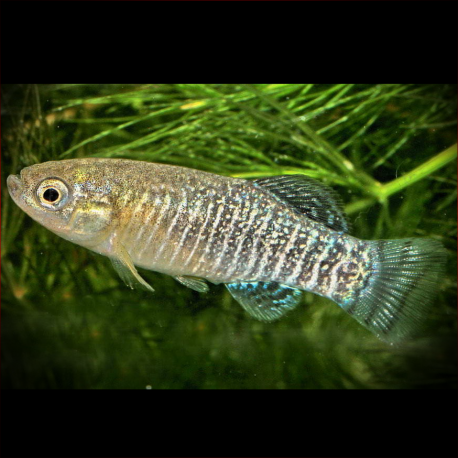More info
Datasheet
| Minimum Tank Size | 60 litres / 15.85 US gallons |
| Maximum Size | 5.0cm / 1.97inches |
| Temperature | 2°C / 35.60°F - 30°C / 86.00°F |
| Hardness | 10.03dgH / 179ppm - 30.03dgH / 536ppm |
| pH | 7.0-9.0 |
General Description
The Aphanius Iberus, commonly known as the Spanish Toothcarp, is a species under the family Cyprinodontidae. It is a micropredator that primarily feeds on small aquatic crustaceans, worms, insect larvae, and zooplankton, with occasional plant material intake. Typically, reaching a maximum size of 5.0cm, these fish are not as vibrant in coloration as some of their relatives but are known for their intriguing behavior and constant activity in aquarium settings.
Aquarium Setup
For maintaining Aphanius Iberus, a tank size of at least 60 liters is recommended, and they should ideally be kept alone due to their aggressive spawning behavior. When housed in a group, a ratio of two to three females per male is advised to prevent excess aggression. Setting up the aquarium requires a focus on broken lines of sight, suitable substrate for egg deposition, and spaces where subdominant male and female fish can seek refuge from dominant males during the spawning season. Filtration need not be overly strong, and the addition of marine salt in a ratio of 1-3 g/L is recommended for most populations.
Behaviour
Due to its specific water requirements and reproductive behavior, Aphanius Iberus is not ideal for community tanks. These fish are fractional spawners, with males defending territories to entice females to spawn. Dominant males display intense coloration, and females can release up to 1000 eggs per year. Captive breeding projects are crucial for their conservation, and close monitoring is required during the spawning period to prevent egg/fry predation.
Feeding and Diet
Aphanius Iberus are micropredators that adapt well to accepting dried foods in captivity, although regular meals of live or frozen fare like Artemia, Daphnia, or bloodworm are essential, particularly during the spring and summer months due to their high reproductive activity. Introducing a quality dried food with Spirulina content is recommended if the aquarium lacks filamentous algae, a component they typically feed on in their natural habitat.
Reproduction & Dimorphism
The species shows adaptations for unstable environments, with females depositing eggs continuously between April and September. Their reproductive strategy includes a short lifespan, early sexual maturity, and high reproductive effort, typically producing two generations within a spawning season. Males exhibit silvery vertical bars and intense coloration, while females are larger and plainer with smaller spots on their flanks and transparent fins.
Habitat and Distribution
Aphanius Iberus is found in shallow coastal waters like lagoons, salt marshes, and streams with dense vegetation along the Spanish Mediterranean coastline. Their distribution has significantly declined due to human activities, with isolated populations in regions like Catalonia, Valencia, and Murcia. The species faces threats from habitat degradation, pollution, and competition with non-native species, leading to conservation concerns and captive breeding initiatives to ensure their survival.

